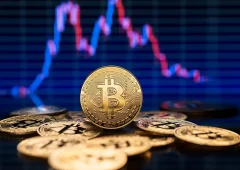XRP Ledger Introduces New Update with Enhanced Security and Features
07.03.2025 15:00 1 min. read Alexander Stefanov
RippleX has unveiled the release of rippled version 2.4.0, a major update to the XRP Ledger protocol, introducing a variety of enhancements designed to increase the ledger’s performance.
This latest update includes critical bug fixes, new features, and several amendments that focus on improving both security and compliance.
Among the key changes, five major amendments are being implemented. One significant feature is the DynamicNFT amendment (XLS-46), which allows for minting tokens with changeable URIs. Additionally, the PermissionedDomains amendment (XLS-80) introduces restricted access to certain domains, supporting compliance measures.
Other amendments provide improvements like freezing trust lines (DeepFreeze – XLS-77) and stricter transaction validation (fixInvalidTxFlags), ensuring greater security and control over asset transfers.
The new version also adds useful features such as a simulation API for transaction testing, updates to asset definitions in transactions, and improvements to logging and validation checks.
Another important upgrade is enhanced security for the Unique Node List (UNL), which now requires validators to meet stricter criteria for updates, improving overall network integrity. A variety of bug fixes, including build compatibility with different operating systems, are also part of this release.
The community will now vote on these amendments, and if they receive sufficient support from validators, they will be fully integrated into the network.
-
1
Chinese Tech Firms Turn to Crypto for Treasury Diversification
26.06.2025 17:00 1 min. read -
2
FTX Halts Recovery Payments in 49 Countries: Here Is the List
04.07.2025 18:00 2 min. read -
3
What Are the Key Trends in European Consumer Payments for 2024?
29.06.2025 8:00 2 min. read -
4
What Brian Armstrong’s New Stats Reveal About Institutional Crypto Growth
29.06.2025 15:00 2 min. read -
5
Donald Trump Signs “One Big Beautiful Bill”: How It Can Reshape the Crypto Market
05.07.2025 9:56 2 min. read
U.S. Public Pension Giant Boosts Palantir and Strategy Holdings in Q2
According to a report by Barron’s, the Ohio Public Employees Retirement System (OPERS) made notable adjustments to its portfolio in Q2 2025, significantly increasing exposure to Palantir and Strategy while cutting back on Lyft.
Key Crypto Events to Watch in the Next Months
As crypto markets gain momentum heading into the second half of 2025, a series of pivotal regulatory and macroeconomic events are poised to shape sentiment, liquidity, and price action across the space.
Here is Why Stablecoins Are Booming, According to Tether CEO
In a recent interview with Bankless, Tether CEO Paolo Ardoino shed light on the growing adoption of stablecoins like USDT, linking their rise to global economic instability and shifting generational dynamics.
U.S. Dollar Comes Onchain as GENIUS Act Ushers in Digital Era
In a statement that marks a major policy shift, U.S. Treasury Secretary Scott Bessent confirmed that blockchain technologies will play a central role in the future of American payments, with the U.S. dollar officially moving “onchain.”
-
1
Chinese Tech Firms Turn to Crypto for Treasury Diversification
26.06.2025 17:00 1 min. read -
2
FTX Halts Recovery Payments in 49 Countries: Here Is the List
04.07.2025 18:00 2 min. read -
3
What Are the Key Trends in European Consumer Payments for 2024?
29.06.2025 8:00 2 min. read -
4
What Brian Armstrong’s New Stats Reveal About Institutional Crypto Growth
29.06.2025 15:00 2 min. read -
5
Donald Trump Signs “One Big Beautiful Bill”: How It Can Reshape the Crypto Market
05.07.2025 9:56 2 min. read


